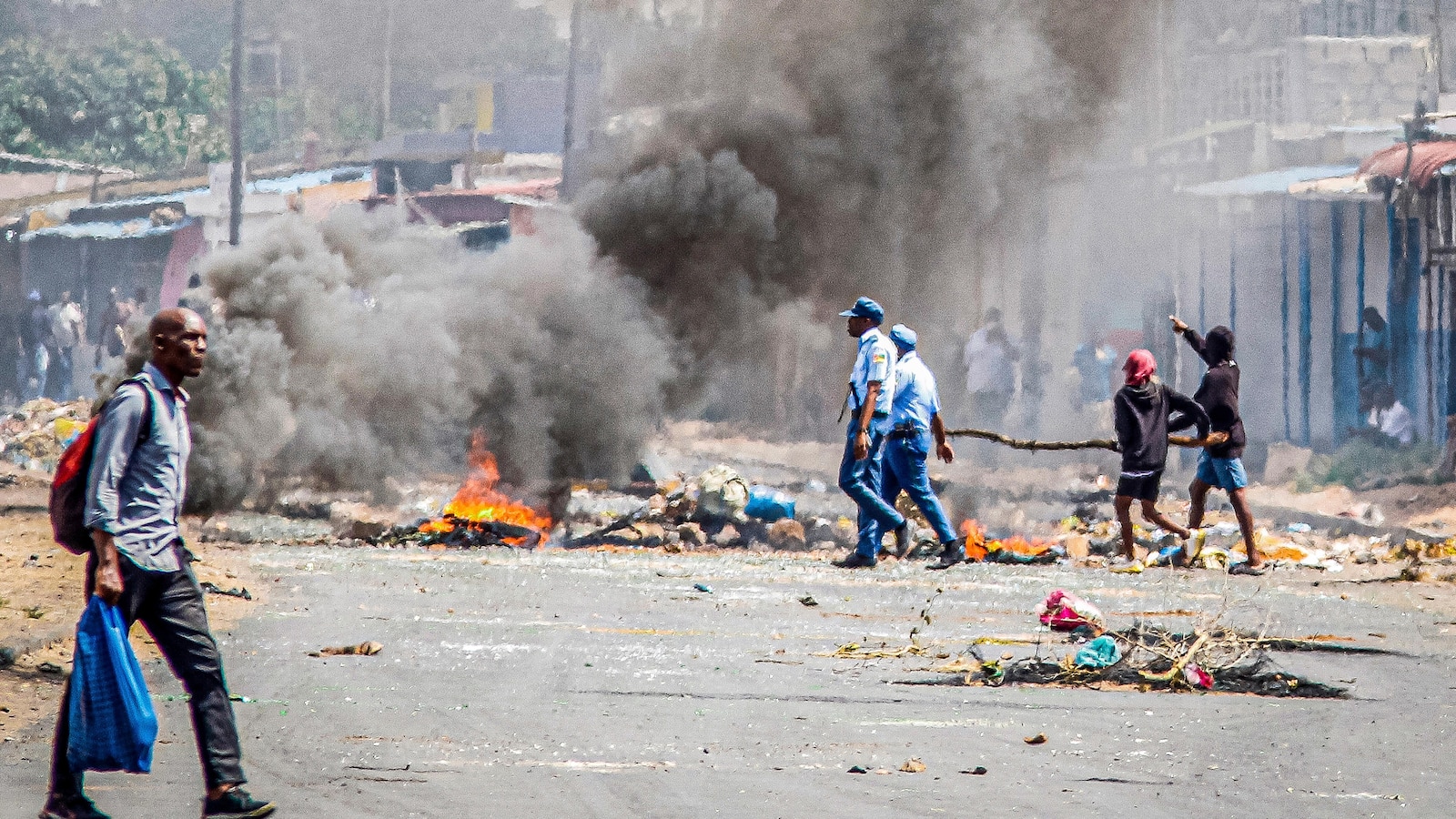KALIAPANI, India (AP) — In the dusty mountains of eastern India, workers at the country’s largest chromium deposit have mined for the essential ore, rain or shine, for around 60 years.
The industry is fruitful in some ways — hundreds of trucks stacked with mineral-rich soil journey back and forth regularly between the mine and processing plants — but it is damaging in others. Farmers say their fields are stripped of fertile earth and livestock desperately comb through now-barren lands for feed.
“We used to grow chilies and other vegetables earlier but now when it rains all the soil from the mines washes onto our fields,” bringing with it harmful effluent, said Gurucharan Mohant, a 60-year-old farmer from the nearby village of Kaliapani. “Nothing grows here anymore.”
New U.S. legislation would ban imported products containing critical green transition minerals mined by child labor in Congo.

Movie director James Cameron says he feels he “walked into an ambush” this week during a visit to Argentina in which he believes there was an attempt to use his image as an environmentalist to give a positive spin to lithium mining operations despite opposition from Indigenous communities.

SANTIAGO, Chile (AP) — Chile’s state-owned copper mining giant Codelco on Wednesday shut down its Ventanas copper smelter after decades of polluting Quintero Bay with toxic gases and turning it, along with 15 other companies, into what environmentalists called a “sacrifice zone.”
Chromium, used mostly as a coating to stop rust in steel and car parts, has been deemed necessary for India’s transition to cleaner energy. A layer of chromium makes solar panels more efficient, and the mineral is also used in wind turbines and batteries. Lawmakers — including at Wednesday’s Group of Twenty ministerial talks on clean energy — want the country to expand its critical mineral mining operations and make its own clean energy infrastructure from start to finish.
Now other critical minerals, like lithium, cobalt and nickel, which are also used in solar panels, wind turbines and batteries, are being discovered in India. It’s a chance to build out more green infrastructure in a country with escalating energy needs and bolster mineral supply chains worldwide, but concerns remain about the environmental consequences mining will have on neighboring villages, like Kaliapani.
Kaliapani is impoverished, has little access to clean water and residents claim their chronic overexposure to chromium has caused health problems.
“Any mining has impact,” said Sandeep Pai of the think tank Swaniti Initiative, “India needs to be thinking of how everyone involved, including local communities, will benefit before they begin mining for critical minerals like lithium.”
The Odisha Mining Company, which runs the mine near Kaliapani, said on its website that it works closely with local communities, has set up occupational health centers for its workforce and promotes high safety standards.
In June, India joined a U.S.-led critical mineral alliance during Prime Minister Narendra Modi’s meeting with U.S. President Joe Biden. Then earlier this month, India’s mining ministry released its first-ever report on the minerals the country needs to grow its economy. It declared 30 minerals, including lithium, chromium, cobalt and nickel, as essential.
Mining minister Pralhad Joshi called the list “India’s roadmap for ‘Aatmanirbhar Bharat,’” a commonly-used Sanskrit term meaning “self-reliance.”
Both moves were hailed by energy experts as steps in the right direction.
“International coordination is actually a major component of critical mineral security and to have access to the global supply chain, joining the U.S.-led alliance, is great news for India,” said Ganesh Sivamani of the New Delhi-based think tank, Centre for Social and Economic Progress. Sivamani also credited the minerals list as the beginning of a strategy for India to better achieve its clean energy goals.
Eric Buisson, a critical minerals analyst at the International Energy Agency, also noted the “strong need” for minerals to crank up the move to cleaner energy.
“You need to make sure that you have access directly or indirectly to these raw materials,” he said.
Developing vast amounts of clean energy is seen as essential to limit warming to the global goal of 1.5 degrees Celsius (2.7 degrees Fahrenheit) as it can replace heat-trapping fossil fuels like coal, oil and gas with alternatives that emit little or no carbon dioxide.
India plans to install 500 gigawatts of clean energy by the end of the decade — enough to power 300 million Indian homes. The country has currently installed 176 gigawatts of renewable energy and aims to reach net zero emissions by 2070.
The critical minerals market has doubled in the past five years, mostly down to the booming clean energy sector, according to a report by the International Energy Agency. The IEA also said that demand for minerals like lithium will balloon 40 times and demand for graphite, cobalt and nickel will likely grow up to 25 times by 2040 in an earlier report.
But “diversity of supply also remains a concern” the IEA’s report said, with a handful of countries, particularly China, dominating the supply chain for many critical minerals.
Sivamani said work on finding minerals in India needs to ramp up, especially given geopolitical developments such as China banning exports of minerals such as gallium and germanium, both used for making electronics, in June.
“We don’t want to be caught unaware,” Sivamani said. “Our best bet is to be self-sufficient as much as possible so that we don’t need to depend on anyone else to achieve our economic and climate goals.”
Experts and activists want to see this done in a just way, with protections for workers and local communities.
Earlier this month, the Business and Human Rights Resource Center raised fears about alleged human rights and environmental abuses across the critical mineral supply chain. Many have called for companies involved in the transition to clean energy to hold themselves to higher standards.
Pai, of the Swaniti Initiative, said expanding India’s mining network is a chance to start a better relationship with local communities atop of critical mineral deposits and protect them from potential environmental harm.
“If India fails to do this, it is inevitable that there will be opposition from affected communities once mining begins,” he said.
___
Follow Sibi Arasu on Twitter at @sibi123.
___
Arasu reported from Bengaluru, India.
___ Associated Press climate and environmental coverage receives support from several private foundations. See more about AP’s climate initiative here. The AP is solely responsible for all content.
#India #sets #sights #homemined #minerals #boost #clean #energy #plans











Leave a Reply